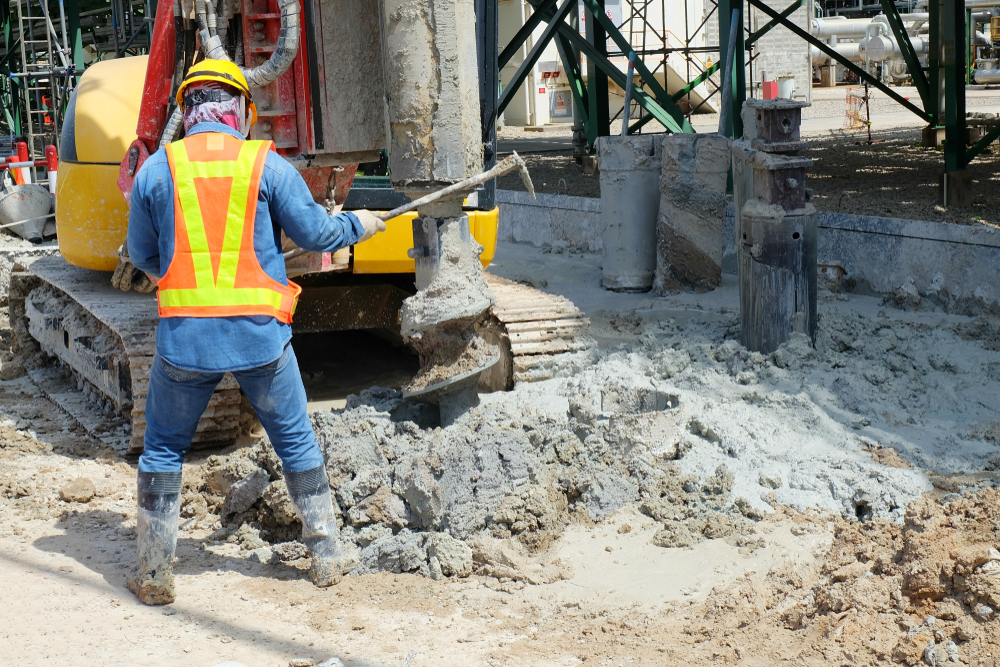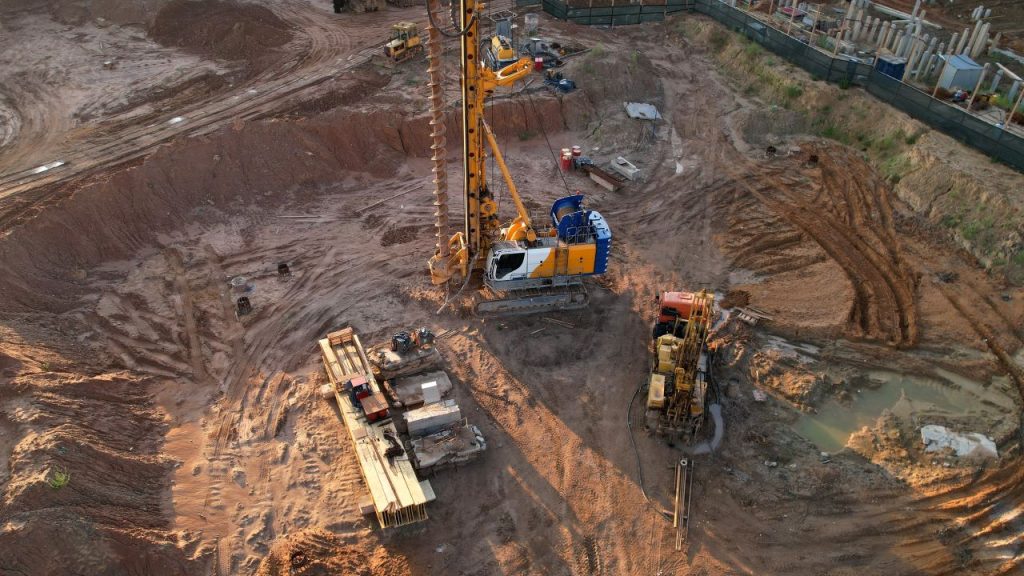Discovering the Benefits of Geo Tech Engineering for Urban Planning
A Detailed Summary of the Trick Responsibilities of Geotechnical Designers in Site Characterization and Ground Renovation Strategies for Design Solutions
Geotechnical designers are integral to the successful implementation of engineering projects, tasked with the essential obligations of website characterization and the application of ground renovation strategies. Their job includes an extensive evaluation of subsurface conditions, employing different screening techniques to determine dirt and rock buildings. This foundational expertise not only notifies style decisions however also mitigates prospective threats connected with ground instability. As we check out the complex duties of these professionals, it comes to be noticeable exactly how their experience shapes the safety and effectiveness of design options. What details techniques and assessments stick out in this important self-control?
Function of Geotechnical Engineers
Geotechnical designers play a crucial function in the design and construction of infrastructure by assessing the habits of soil and rock underneath the surface area - geotechnical industry. Their duties incorporate examining subsurface conditions to educate style decisions that guarantee architectural stability and safety. By conducting comprehensive analyses of dirt properties, including shear leaks in the structure, toughness, and compressibility, geotechnical engineers offer important data that influences the selection of proper building and construction products and techniques
Along with analyzing dirt mechanics, geotechnical designers are charged with determining potential risks such as landslides, sinkholes, and ground negotiations. Their proficiency aids alleviate dangers connected with these geotechnical phenomena, therefore safeguarding both the atmosphere and public safety and security. They likewise work together very closely with various other engineering self-controls, ensuring that geotechnical factors to consider are incorporated into general task design.
Additionally, geotechnical designers participate in the evaluation of existing frameworks, supplying referrals for retrofitting and repairs when necessary. Their comprehensive understanding of soil-structure communication is crucial for the advancement of sustainable infrastructure options. On the whole, the role of geotechnical engineers is important to the successful awareness of building and construction tasks, guaranteeing they are secure, long lasting, and compliant with governing criteria.

Site Characterization Processes
Reliable site characterization procedures are essential for recognizing the subsurface problems that affect task layout and execution. Geotechnical designers utilize a methodical method to gather, evaluate, and interpret data regarding groundwater, rock, and soil attributes. This procedure begins with a thorough review of existing literature and archaeological site information, supplying understandings into previous website conditions and possible obstacles.

Information evaluation follows fieldwork, where designers utilize geostatistical methods to analyze findings and develop geological versions. Through diligent website characterization, geotechnical designers lay the foundation for successful job implementation, enhancing and minimizing unexpected issues resource allotment.
Soil and Rock Screening Methods
While comprehending subsurface conditions is critical, the choice of suitable navigate to this website dirt and rock screening methods is equally crucial for exact evaluation and design. Geotechnical engineers use a selection of screening strategies to examine the mechanical and physical homes of dirt and rock materials.
Laboratory tests, such as Atterberg restrictions, grain dimension evaluation, and unconfined compressive toughness tests, offer necessary data on soil habits under different dampness conditions and filling circumstances. These examinations aid identify dirt category and anticipate settlement or shear toughness features important for foundation style.
In-situ testing methods, including Requirement Penetration Tests (SPT), Cone Penetration Tests (CPT), and pressure meter tests, allow engineers to collect information straight from the ground. These approaches provide beneficial insights right into the soil's density, uniformity, and stratification without the demand for comprehensive sampling.
Rock screening typically includes core tasting and research laboratory evaluation to examine properties like uniaxial compressive toughness and rock quality designation (RQD) Together, these dirt and rock go to my blog testing approaches make it possible for geotechnical designers to make educated choices regarding site-specific challenges, ensuring the security and security of engineering solutions.
Ground Improvement Strategies
Ground improvement strategies are crucial for boosting the engineering residential properties of soil, thus increasing its load-bearing capability and lowering settlement. These methods are vital in dealing with difficulties provided by bothersome or weak soils, which can substantially affect the stability and sturdiness of frameworks.
Various ground renovation techniques are employed, including compaction, grouting, and dirt stablizing. Grouting, on the various other hand, includes infusing a see fluid material right into the ground to load gaps and boost dirt communication.
Dirt stabilization incorporates an array of methods, from chemical ingredients to mechanical treatments, intended at boosting the dirt's resistance to erosion and deformation. Strategies such as lime stablizing or cement mixing modify the residential or commercial properties of the dirt at a fragment level, improving its general performance.
Value of Geotechnical Analyses
Geotechnical evaluations play an essential role in the planning and layout of engineering projects, as they offer important info regarding the subsurface problems. Understanding dirt residential or commercial properties, rock developments, groundwater degrees, and potential geohazards is vital for making sure the stability and safety and security of structures. These evaluations allow engineers to make enlightened decisions pertaining to site selection, style criteria, and building techniques.
The significance of geotechnical evaluations prolongs past preliminary job stages; they contribute in risk management and expense effectiveness. By determining possible problems early, such as dirt settlement, slope instability, or extreme groundwater, designers can develop proper reduction methods, reducing the chance of costly hold-ups and structural failures. In addition, these assessments sustain conformity with governing demands and boost the sustainability of engineering methods.

Conclusion
In final thought, geotechnical designers are crucial to making certain the security and stability of engineering jobs through extensive website characterization and ground enhancement methods. geotech engineer. Their systematic approach to assessing subsurface conditions, incorporated with their referrals for efficient ground alteration, considerably improves soil residential properties and load-bearing capacity. The competence of geotechnical engineers not just promotes informed task planning yet likewise makes sure conformity with regulations and cultivates effective communication among stakeholders, ultimately adding to effective engineering results
Geotechnical designers play an essential role in the layout and building of infrastructure by analyzing the habits of dirt and rock beneath the surface area. By conducting detailed evaluations of dirt buildings, including shear leaks in the structure, compressibility, and toughness, geotechnical designers give critical information that influences the selection of ideal construction materials and techniques.
In enhancement to evaluating dirt technicians, geotechnical engineers are entrusted with identifying potential threats such as landslides, sinkholes, and ground settlements. Geotechnical designers utilize an organized technique to gather, evaluate, and translate data concerning rock, dirt, and groundwater features. By determining possible concerns early, such as soil negotiation, slope instability, or too much groundwater, designers can develop appropriate reduction techniques, reducing the likelihood of structural failures and costly hold-ups.